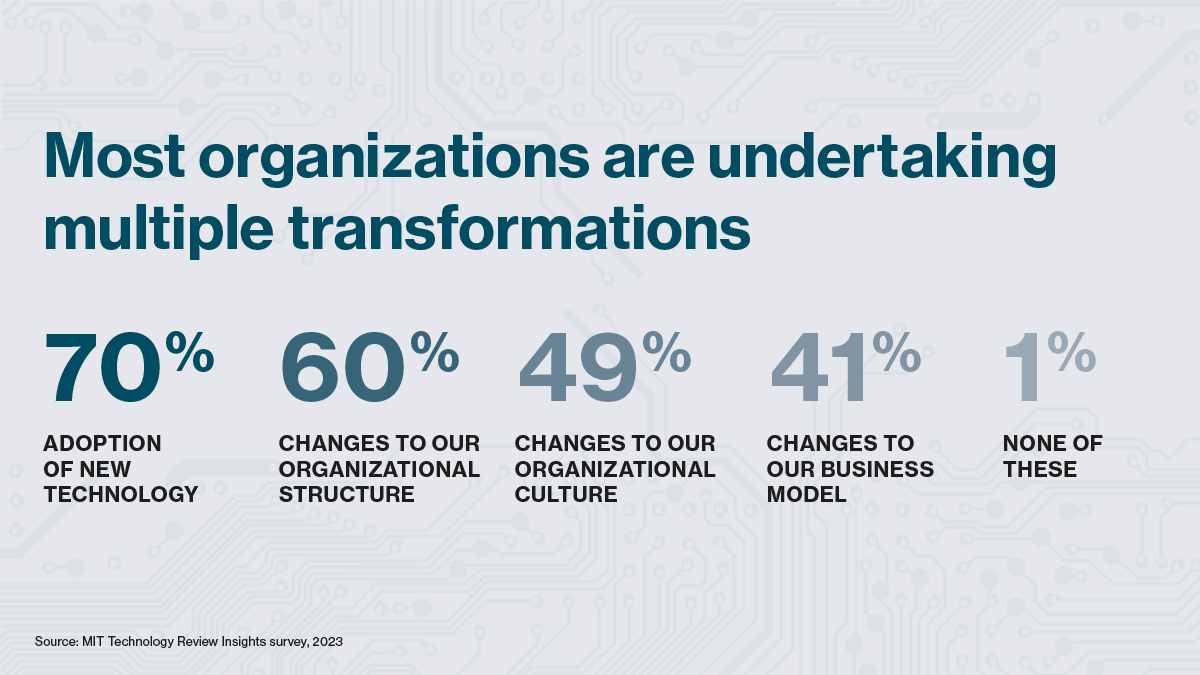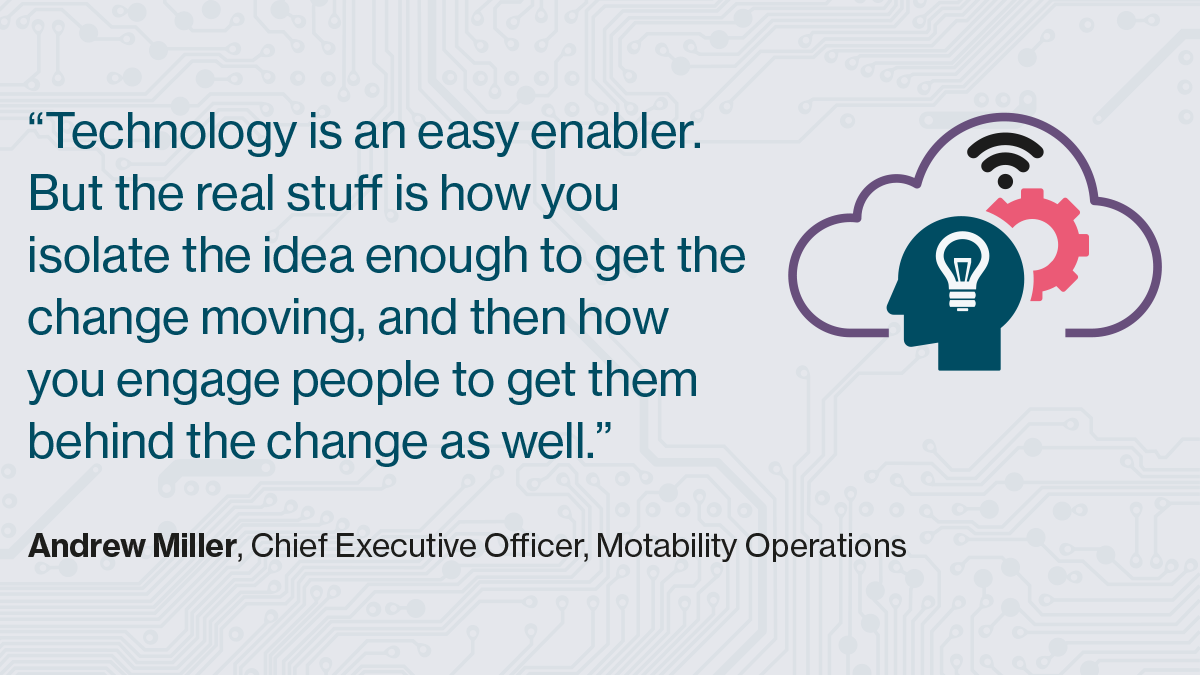The global technology consultancy Thoughtworks describes organizations that can respond to marketplace changes with continuous adaptation as “evolutionary organizations.” It argues that, instead of focusing only on technology change, organizations should focus on building capabilities that support ongoing reinvention. While many organizations recognize the benefit of adopting agile approaches in their technology capabilities and architectures, they have not extended these structures and ways of thinking throughout the operating model, which would allow their impact to extend beyond that of a single transformation project.

Global spending on digital transformation is growing at a brisk pace: 16.4% per year according to IDC. The firm’s 2021 “Worldwide Digital Transformation Spending Guide” forecasts that annual transformation expenditures will reach $2.8 trillion in 2025, more than double the spending in 2020.1 At the same time, research from Boston Consulting Group shows that 7 out of 10 digital transformation initiatives fall short of their objectives. Organizations that succeed, however, achieve almost double the earnings growth of those that fail and more than double the growth in the total value of their enterprises.2 Understanding how to make these transitions successful, then, should be of key interest to all business leaders.
This MIT Technology Review Insights report is based on a survey of 275 corporate leaders, supplemented by interviews with seven experts in digital transformation. Its key findings include the following:
• Digital transformation is not solely a technology issue. Adopting new technology for its own sake does not set the organization up to continue to adapt to changing circumstances. Among survey respondents, however, transformation is still synonymous with tech, with 70% planning to adopt a new technology in the next year, but only 41% pursuing changes to their business model.

• The business environment is changing faster than many organizations think. Most survey respondents (81%) believe their organization is more adaptable than average and nearly all (89%) say that they’re keeping up with or ahead of their competitors—suggesting a wide gap between the rapidly evolving reality and executives’ perceptions of their preparedness.
• All organizations must build capabilities for continuous reinvention. The only way to keep up is for organizations to continuously change and evolve, but most traditional businesses lack the strategic flexibility necessary to do this. Nearly half of business leaders outside the C-suite (44%), for example, say organizational structure, silos, or hierarchy are the biggest obstacle to transformation at their firm.
• Focusing on customer value and empowering employees are keys to organizational evolution. The most successful transformations prioritize creating customer value and enhancing customer and employee experience. Meeting evolving customer needs is the constant source of value in a world where everything is changing, but many traditional organizations fail to take this long view, with only 15% of respondents most concerned about failing to meet customer expectations if they fail to transform.
• Rapid experimentation requires the ability to fail and recover quickly. Organizations agree that iterative, experimental processes are essential to finding the right solutions, with 81% saying they have adopted agile practices. Fewer are confident, however, in their ability to execute decisions quickly (76%)—or to shut down initiatives that aren’t working (60%).

